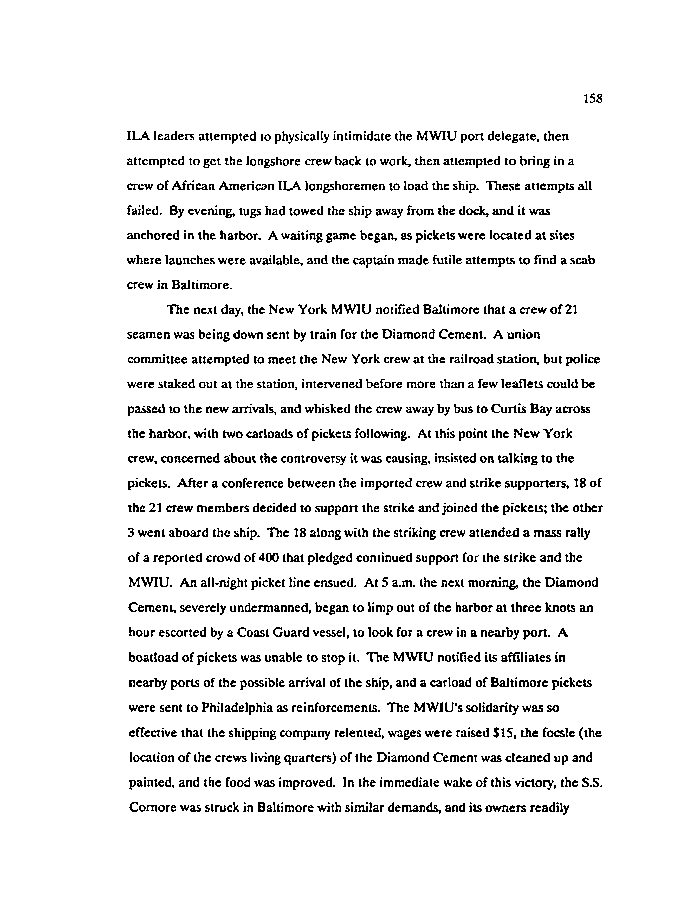|
158
I LA leaders attempted to physically intimidate the MWIU port delegate, then
attempted to get the longshore crew back to work, then attempted to bring in a
crew of African American I LA longshoremen to load the ship. These attempts all
failed. By evening, tugs had towed the ship away from the dock, and it was
anchored in the harbor. A waiting game began, as pickets were located at sites
where launches were available, and the captain made futile attempts to find a scab
crew in Baltimore.
The next day, the New York MWIU notified Baltimore that a crew of 21
seamen was being down sent by train for the Diamond Cement. A union
committee attempted to meet the New York crew at the railroad station, but police
were staked out at the station, intervened before more than a few leaflets could be
passed to the new arrivals, and whisked the crew away by bus to Curtis Bay across
the harbor, with two carloads of pickets following. At this point the New York
crew, concerned about the controversy it was causing, insisted on talking to the
pickets. After a conference between the imported crew and strike supporters, 18 of
the 21 crew members decided to support the strike and joined the pickets; the other
3 went aboard the ship. The 18 along with the striking crew attended a mass rally
of a reported crowd of 400 that pledged continued support for the strike and the
MWIU. An all-night picket line ensued. At 5 a.m. the next morning, the Diamond
Cement, severely undermanned, began to limp out of the harbor at three knots an
hour escorted by a Coast Guard vessel, to look for a crew in a nearby port. A
boatload of pickets was unable to stop it. The MWIU notified its affiliates in
nearby ports of the possible arrival of the ship, and a carload of Baltimore pickets
were sent to Philadelphia as reinforcements. The MWIU's solidarity was so
effective that the shipping company relented, wages were raised $15, the focsle (the
location of the crews living quarters) of the Diamond Cement was cleaned up and
painted, and the food was improved. In the immediate wake of this victory, the S.S.
Cornore was struck in Baltimore with similar demands, and its owners readily
|

